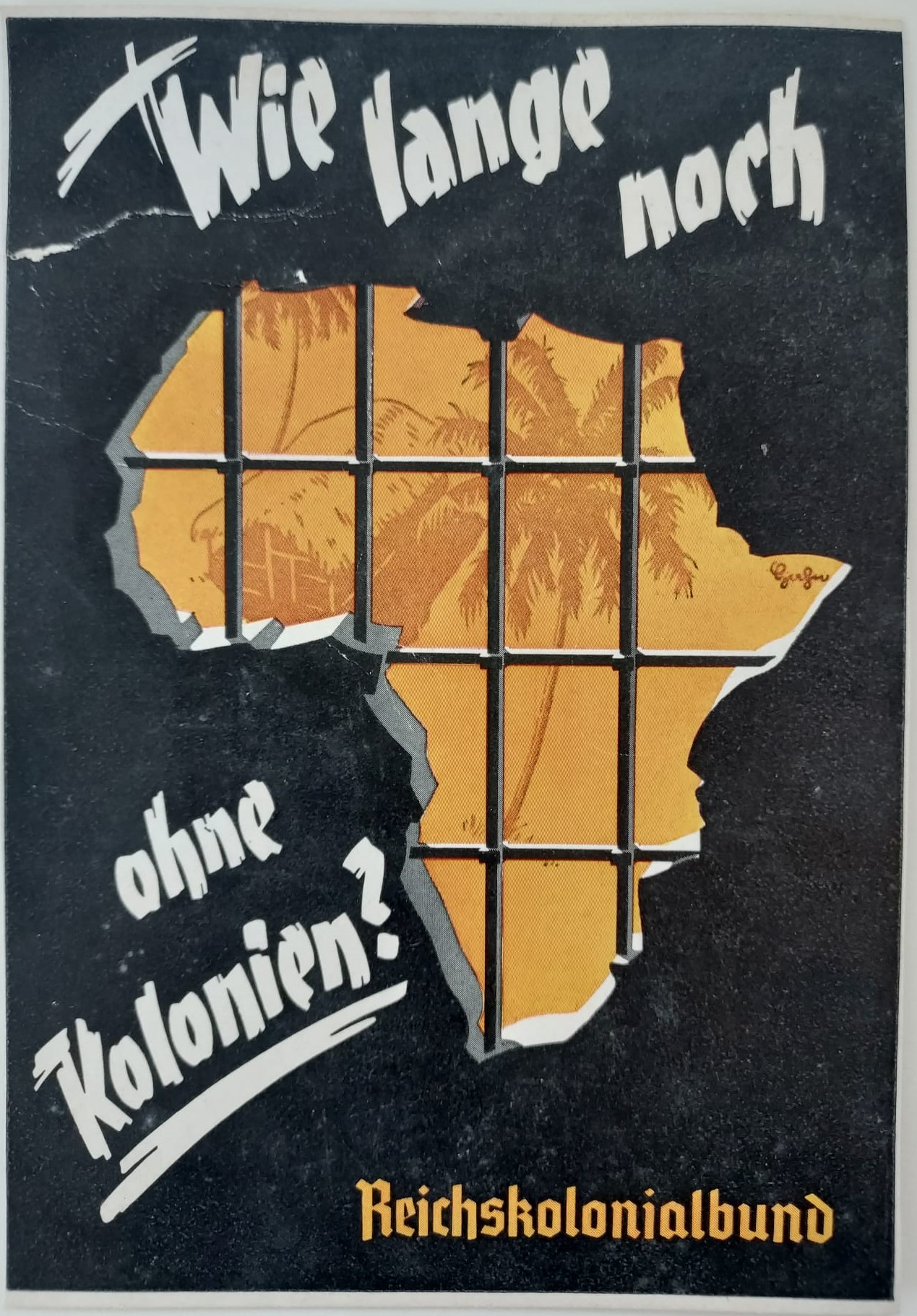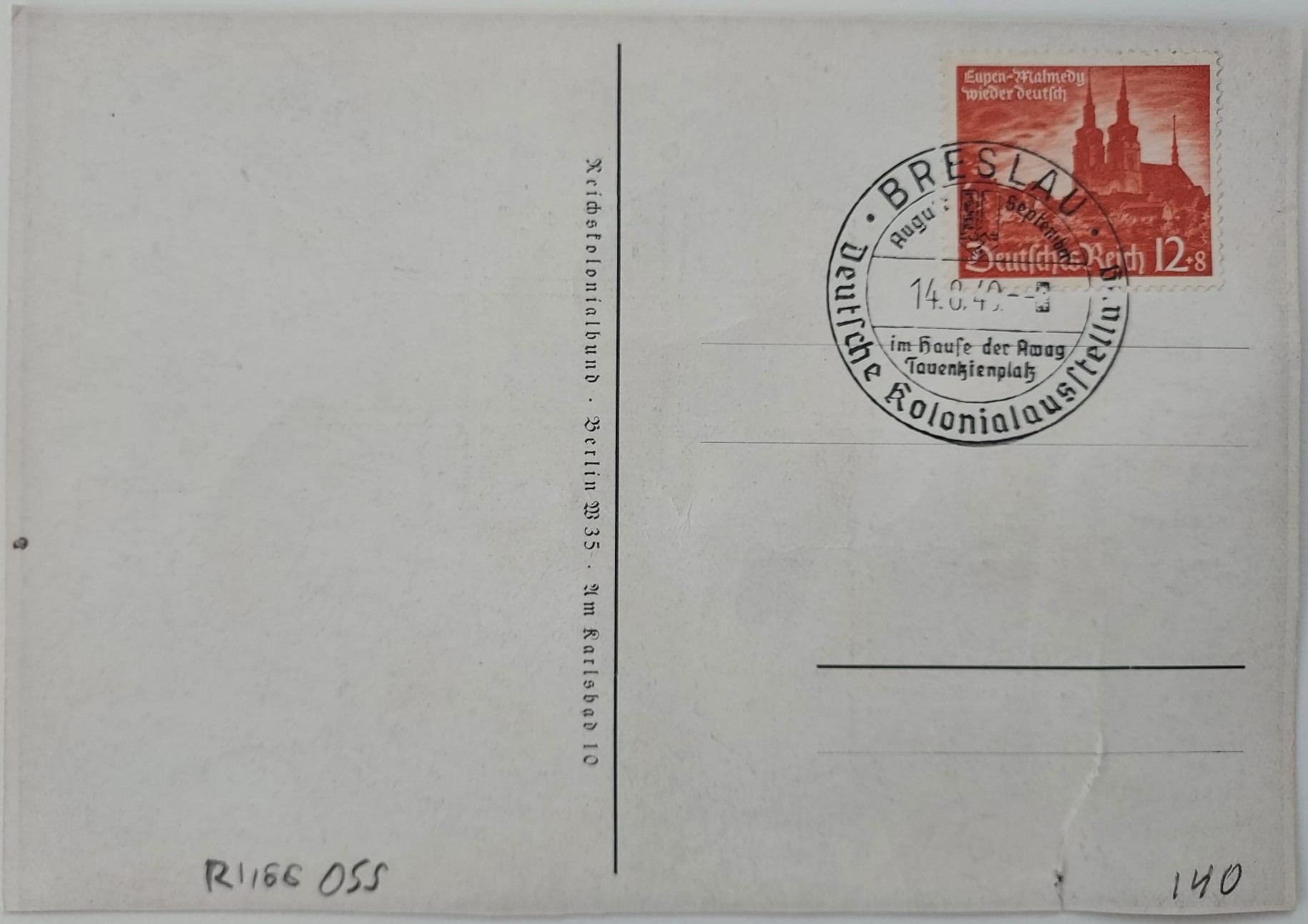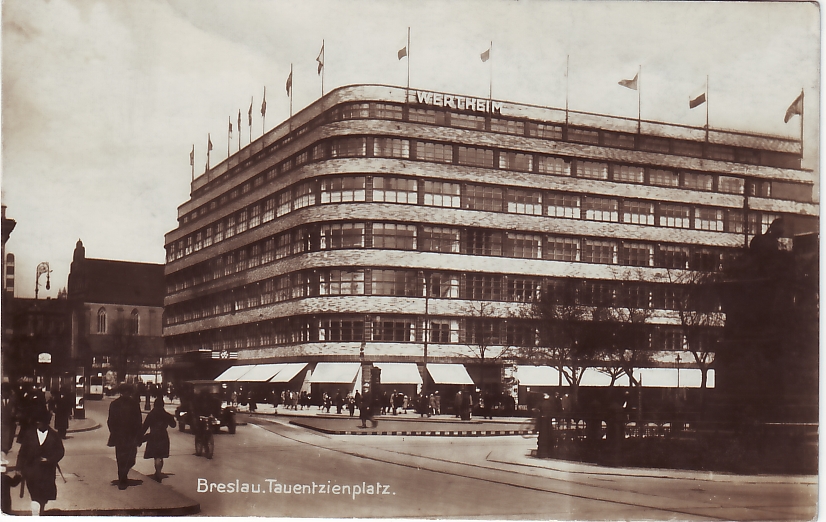Accession Number: 2022.02.2.110
Stamp: 749 Eupen Malmedy Wieder Deutsch 12 Pf 8 Deutsches Reich.
This stamp depicts Eupen-Malmedy, a 20 to 50 km wide region located on the German-Belgian border. This region, originally part of Prussia and the German Empire, was incorporated into Belgium as a part of the Treaty of Versailles following World War I. In May 1940, Nazi Germany invaded Belgium and formally annexed Eupen-Malmedy into the Reich. The stamp is in commemoration of this event. It reads “Eupen Malmedy wieder Deutsch,” meaning “Eupen-Malmedy German once more.” The region was returned to Belgium in 1945.
Postmark:
Breslau Deutsche Kolonialausstellung
August-September
14.8.40
Im hause der Awag Tauentzienplatz
Breslau German Colonial Exhibition
August-September
14 August 1940
In the Tauentzien Plaza AWAG building
Tauentzienplatz is the German name for the Tadeusz-Kościuszko plaza in Breslau, a city in Poland that fell to the Nazi invasion of Poland. In September 1941 Breslau’s 10,000 Jews were expelled from their homes and soon deported to concentration camps. This postmark is noting an exhibition for the Reich Colonial League in Breslau.
AWAG is an acronym for Allgemeine Warenhandelsgesellschaft A.G. (General Retailing Corporation), the Nazi name for the Wertheim Department Store. Wertheim was a chain of department stores owned by the Jewish Wertheim family from 1876-1933. By 1930, Wertheim operated 18 locations and was the 4th largest department store chain in the country with 10,450 employees and 128 million in annual sales (Bankier, 2001).
As such, it was a major early target for Nazi agitation. These antisemitic attacks came first in the form of Nazi calls for boycotting in the 1920s, and escalated to policy action by the 1930s. Nazi officials required Wertheim to burn 2,500 books between October 1934 and January 1936, eventually requiring him to shut down the book wing entirely. They spread rumors in the press that his grocery salespeople had leprosy. By 1936, all Jewish shareholders were forced to sell their shares to “Aryan” individuals. By early 1938, the company was given the following criteria to meet in order to avoid having their business shut down: non-Jewish ownership, non-Jewish employees, and a new name. The owner, George Wertheim, was able to transfer ownership to his wife Ursula who qualified as Aryan under German law (Bankier, 2001).
George Wertheim died in on 31 December 1939 at age 82 and was buried in a Christian cemetery in Berlin. Most of his family members were able to emigrate or survive the war underground in Berlin, but three Wertheim family members were killed in Auschwitz (Bankier, 2001).
Bankier, D. (2001). Probing the depths of German antisemitism: German society and the persecution of the Jews, 1933-1941. Berghahn Books Yad Vashem.
Historical background:
In the late 19th century, the German Empire embarked on the conquest to colonize Africa, becoming the third-largest colonial power on the continent, after the British and the French. Germany lost all of its colonies as a condition of the Treaty of Versailles in 1919. The colonies were held under a League of Nations mandate with the oversight of the Allied powers.
German organizational efforts rallying for the reclamation of Germany’s former colonies started to gain traction as early as 1923. These groups started as non-governmental organizations, but the movement became so popular among nationalists that it was formally incorporated into the Nazi party structure with the formation of the Reichskolonialbund in 1936. The following of the Reichskolonialbund would grow from fifty thousand members to two million in the following five years (Sandler, 2018). The main purpose of the Reichskolonialbund was to spread awareness. The league would host big propagandistic events in pursuit of this goal, but individual colonialists were expected to relentlessly expound upon the topic in their daily conversations to facilitate grassroots spread (Sandler, 2018).
Sandler, W. (2018). Empire in the Heimat: Colonialism and public culture in the Third Reich. Oxford University Press.




